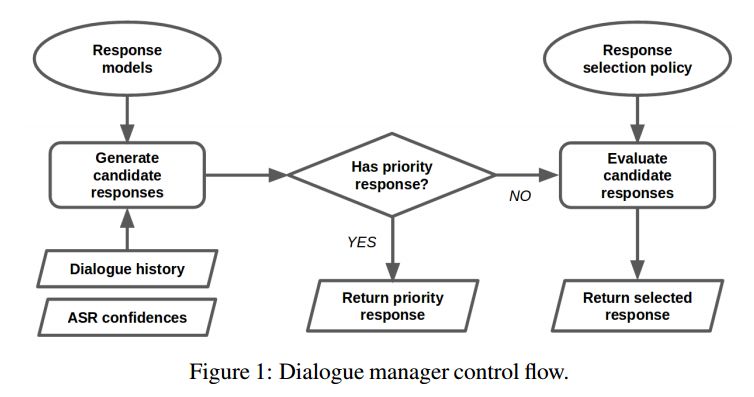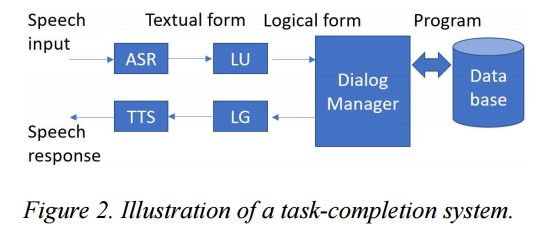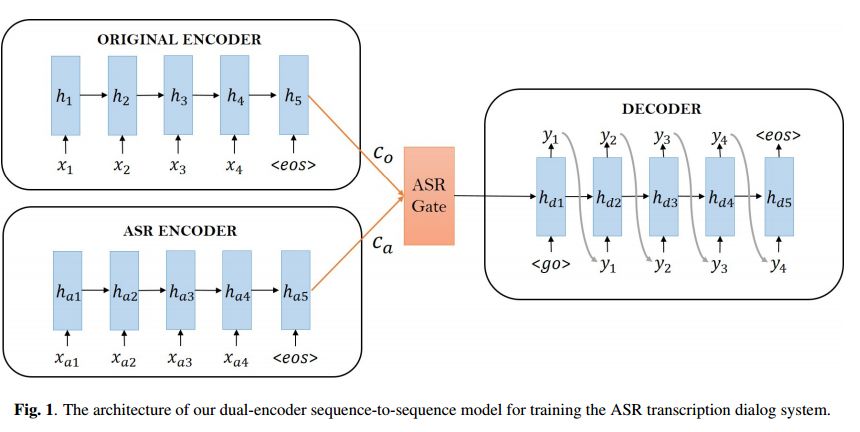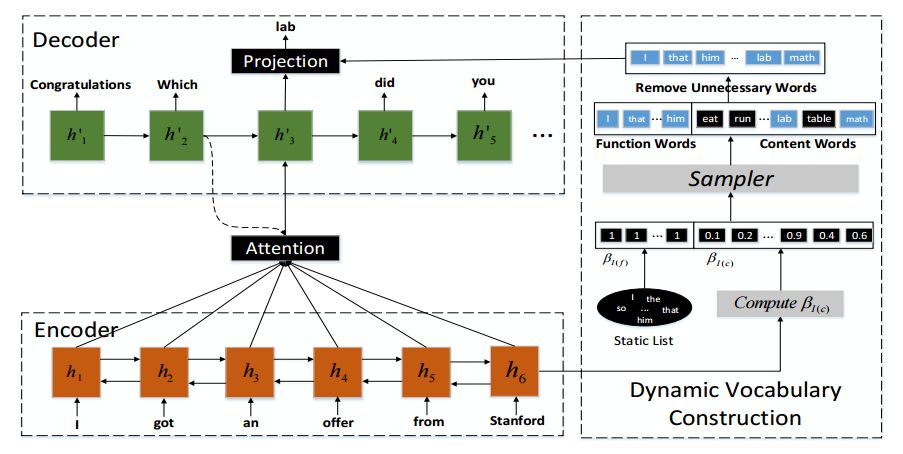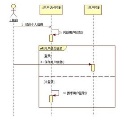【论文推荐】最新5篇聊天机器人(Chatbot)相关论文—深度强化学习、社交聊天机器人小冰、对话聊天助手、序列-序列、动态词汇
【导读】专知内容组整理了最近五篇聊天机器人(Chatbot)相关文章,为大家进行介绍,欢迎查看!
1. A Deep Reinforcement Learning Chatbot (Short Version)(一种深度强化学习的聊天机器人)
作者:Iulian V. Serban,Chinnadhurai Sankar,Mathieu Germain,Saizheng Zhang,Zhouhan Lin,Sandeep Subramanian,Taesup Kim,Michael Pieper,Sarath Chandar,Nan Rosemary Ke,Sai Rajeswar,Alexandre de Brebisson,Jose M. R. Sotelo,Dendi Suhubdy,Vincent Michalski,Alexandre Nguyen,Joelle Pineau,Yoshua Bengio
摘要:We present MILABOT: a deep reinforcement learning chatbot developed by the Montreal Institute for Learning Algorithms (MILA) for the Amazon Alexa Prize competition. MILABOT is capable of conversing with humans on popular small talk topics through both speech and text. The system consists of an ensemble of natural language generation and retrieval models, including neural network and template-based models. By applying reinforcement learning to crowdsourced data and real-world user interactions, the system has been trained to select an appropriate response from the models in its ensemble. The system has been evaluated through A/B testing with real-world users, where it performed significantly better than other systems. The results highlight the potential of coupling ensemble systems with deep reinforcement learning as a fruitful path for developing real-world, open-domain conversational agents.
期刊:arXiv, 2018年1月21日
网址:
http://www.zhuanzhi.ai/document/0ca65e003802506ea6a6d1683e17d3c1
2. From Eliza to XiaoIce: Challenges and Opportunities with Social Chatbots(从聊天机器人ELIZA到小冰:社交聊天机器人的挑战和机遇)
作者:Heung-Yeung Shum,Xiaodong He,Di Li
摘要:Conversational systems have come a long way after decades of research and development, from Eliza and Parry in the 60's and 70's, to task-completion systems as in the ATIS project, to intelligent personal assistants such as Siri, and to today's social chatbots like XiaoIce. Social chatbots' appeal lies in not only their ability to respond to users' diverse requests, but also in being able to establish an emotional connection with users. The latter is done by satisfying the users' essential needs for communication, affection, and social belonging. The design of social chatbots must focus on user engagement and take both intellectual quotient (IQ) and emotional quotient (EQ) into account. Users should want to engage with the social chatbot; as such, we define the success metric for social chatbots as conversation-turns per session (CPS). Using XiaoIce as an illustrative example, we discuss key technologies in building social chatbots from core chat to visual sense to skills. We also show how XiaoIce can dynamically recognize emotion and engage the user throughout long conversations with appropriate interpersonal responses. As we become the first generation of humans ever living with AI, social chatbots that are well-designed to be both useful and empathic will soon be ubiquitous.
期刊:arXiv, 2018年1月6日
网址:
http://www.zhuanzhi.ai/document/2121d6c5c0a7a85355a199ad7f532fc7
3. Evorus: A Crowd-powered Conversational Assistant Built to Automate Itself Over Time(Evorus:一种随着时间推移而自动生成的以人群为动力的对话聊天助手)
作者:Ting-Hao 'Kenneth' Huang,Joseph Chee Chang,Jeffrey P. Bigham
摘要:Crowd-powered conversational assistants have been shown to be more robust than automated systems, but do so at the cost of higher response latency and monetary costs. A promising direction is to combine the two approaches for high quality, low latency, and low cost solutions. In this paper, we introduce Evorus, a crowd-powered conversational assistant built to automate itself over time by (i) allowing new chatbots to be easily integrated to automate more scenarios, (ii) reusing prior crowd answers, and (iii) learning to automatically approve response candidates. Our 5-month-long deployment with 80 participants and 281 conversations shows that Evorus can automate itself without compromising conversation quality. Crowd-AI architectures have long been proposed as a way to reduce cost and latency for crowd-powered systems; Evorus demonstrates how automation can be introduced successfully in a deployed system. Its architecture allows future researchers to make further innovation on the underlying automated components in the context of a deployed open domain dialog system.
期刊:arXiv, 2018年1月10日
网址:
http://www.zhuanzhi.ai/document/d67b1f88b85b9e7d7fca7e654e20b21d
4. Mitigating the Impact of Speech Recognition Errors on Chatbot using Sequence-to-Sequence Model(利用序列-序列模型减轻语音识别错误对聊天机器人的影响)
作者:Pin-Jung Chen,I-Hung Hsu,Yi-Yao Huang,Hung-Yi Lee
摘要:We apply sequence-to-sequence model to mitigate the impact of speech recognition errors on open domain end-to-end dialog generation. We cast the task as a domain adaptation problem where ASR transcriptions and original text are in two different domains. In this paper, our proposed model includes two individual encoders for each domain data and make their hidden states similar to ensure the decoder predict the same dialog text. The method shows that the sequence-to-sequence model can learn the ASR transcriptions and original text pair having the same meaning and eliminate the speech recognition errors. Experimental results on Cornell movie dialog dataset demonstrate that the domain adaption system help the spoken dialog system generate more similar responses with the original text answers.
期刊:arXiv, 2017年12月2日
网址:
http://www.zhuanzhi.ai/document/40c7298156c85e6fdca13a3072988bb9
5. Neural Response Generation with Dynamic Vocabularies(动态词汇的神经响应生成)
作者:Yu Wu,Wei Wu,Dejian Yang,Can Xu,Zhoujun Li,Ming Zhou
摘要:We study response generation for open domain conversation in chatbots. Existing methods assume that words in responses are generated from an identical vocabulary regardless of their inputs, which not only makes them vulnerable to generic patterns and irrelevant noise, but also causes a high cost in decoding. We propose a dynamic vocabulary sequence-to-sequence (DVS2S) model which allows each input to possess their own vocabulary in decoding. In training, vocabulary construction and response generation are jointly learned by maximizing a lower bound of the true objective with a Monte Carlo sampling method. In inference, the model dynamically allocates a small vocabulary for an input with the word prediction model, and conducts decoding only with the small vocabulary. Because of the dynamic vocabulary mechanism, DVS2S eludes many generic patterns and irrelevant words in generation, and enjoys efficient decoding at the same time. Experimental results on both automatic metrics and human annotations show that DVS2S can significantly outperform state-of-the-art methods in terms of response quality, but only requires 60% decoding time compared to the most efficient baseline.
期刊:arXiv, 2017年11月30日
网址:
http://www.zhuanzhi.ai/document/0a3f022355b1449c7a46ae27b94ca888
-END-
专 · 知
人工智能领域主题知识资料查看获取:【专知荟萃】人工智能领域26个主题知识资料全集(入门/进阶/论文/综述/视频/专家等)
同时欢迎各位用户进行专知投稿,详情请点击:
【诚邀】专知诚挚邀请各位专业者加入AI创作者计划!了解使用专知!
请PC登录www.zhuanzhi.ai或者点击阅读原文,注册登录专知,获取更多AI知识资料!
请扫一扫如下二维码关注我们的公众号,获取人工智能的专业知识!
请加专知小助手微信(Rancho_Fang),加入专知主题人工智能群交流!
点击“阅读原文”,使用专知!
